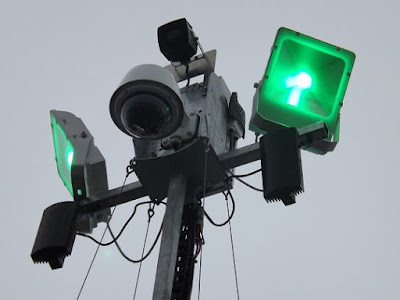4Ksurveillance is the latest offering within the world of HD video security and surveillance cameras. The 4K label on a camera means the device will record images at a level of about 12 megapixels or video at double the resolution of a typical HD TV (1920 x 1080). It may not look like much, iPhone 6 comes with 8 megapixels of resolution, once you compare the image or video from 4K to non-HD surveillance technology, you'll immediately and intuitively get to know that the increased resolution will be the difference between guessing and certainty when analyzing footage. As an example, the image above shows the difference between a 3MP, a 5MP, and a 12MP (4K) camera after they are all digitally zoomed. As you'll be able to see, the clarity of the 4K image is way better.
What are the tradeoffs?
The tradeoff is a balance achieved between two desirable but incompatible features; a compromise. There are some tradeoffs when implementing higher resolution cameras. Two of the largest include the quantity of lighting needed to produce a high-quality image in the dark, and also the amount of storage needed to store the video footage. In general, the higher the resolution of the camera, the more lighting you wish to take care of a usable image in low-light conditions. Manufacturers of 4K technology have made lots of success in designing these cameras to figure in low-light conditions, and plenty of models now have built-in infrared illumination (IR), allowing the cameras to supply a high-quality image in zero-light applications. This IR light is restricted within the distance it can illuminate when built into the camera. If distances exceed 75 to 100 feet, external IR illuminators are also required to produce distances beyond 100 feet.
In addition to lighting, another important factor is that the amount of video storage needed to record a 4K image. In most cases, this breaks all the way down to dollars and cents. you may pay more for 30 days of storage for a 4K versus a 3MP – possibly the maximum amount as 3 times the number. That said, the latest compression technology (H.265) is 30% to 40% more efficient and might save the buyer a considerable amount of cash in comparison to the previous standard H.264. it's important to notice that not all manufacturers support H.265 technology at this point. This can be something that ought to be discussed and regarded when choosing the make and model of the system (s) you're evaluating.
In the end, 4K technology is here to remain. Prices on these cameras are now very affordable and available from a large range of manufacturers. chances are high that your facility can have the benefit of this latest technology.


Comments
Post a Comment